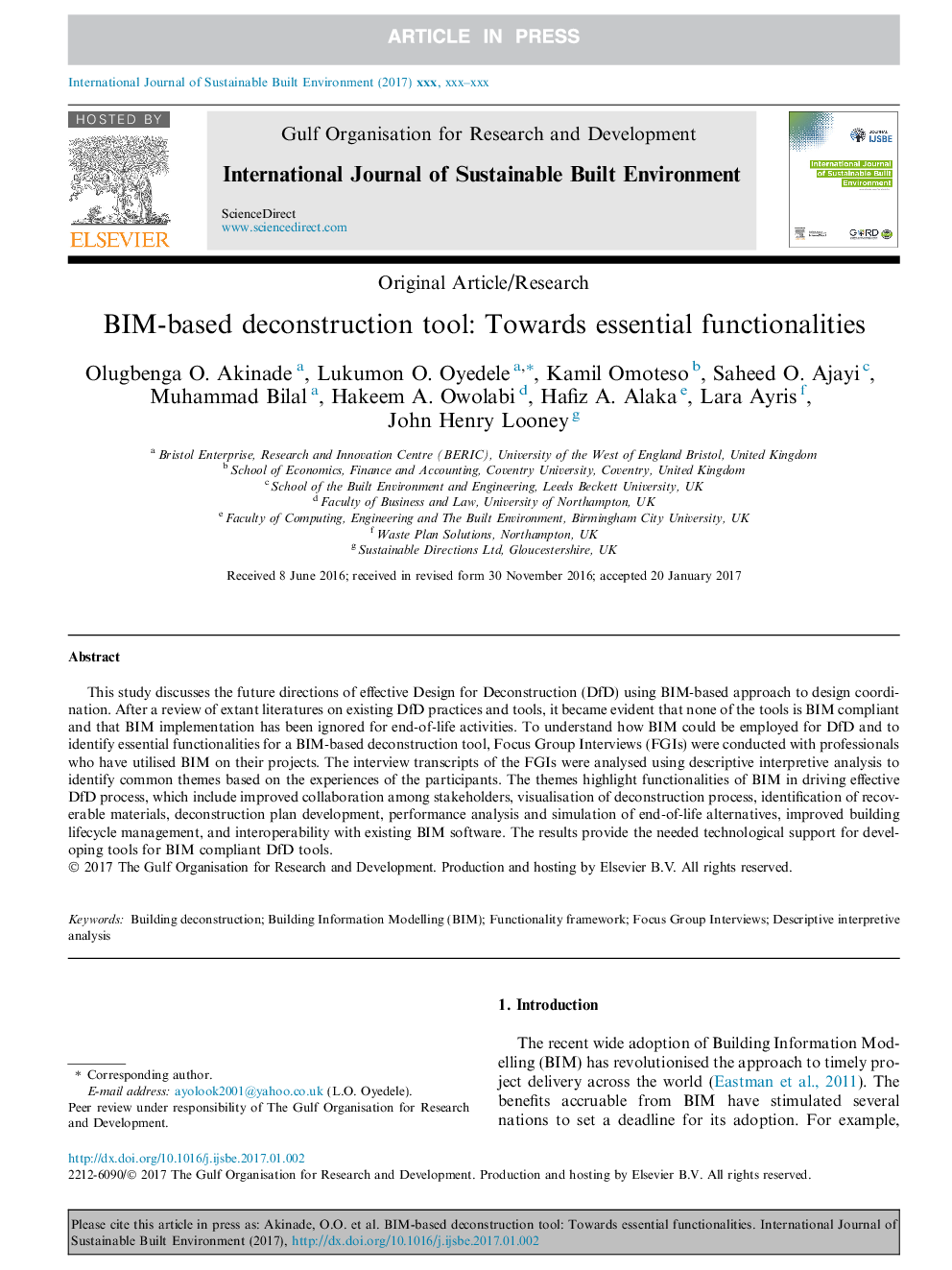| Article ID | Journal | Published Year | Pages | File Type |
|---|---|---|---|---|
| 6659555 | International Journal of Sustainable Built Environment | 2017 | 12 Pages |
Abstract
This study discusses the future directions of effective Design for Deconstruction (DfD) using BIM-based approach to design coordination. After a review of extant literatures on existing DfD practices and tools, it became evident that none of the tools is BIM compliant and that BIM implementation has been ignored for end-of-life activities. To understand how BIM could be employed for DfD and to identify essential functionalities for a BIM-based deconstruction tool, Focus Group Interviews (FGIs) were conducted with professionals who have utilised BIM on their projects. The interview transcripts of the FGIs were analysed using descriptive interpretive analysis to identify common themes based on the experiences of the participants. The themes highlight functionalities of BIM in driving effective DfD process, which include improved collaboration among stakeholders, visualisation of deconstruction process, identification of recoverable materials, deconstruction plan development, performance analysis and simulation of end-of-life alternatives, improved building lifecycle management, and interoperability with existing BIM software. The results provide the needed technological support for developing tools for BIM compliant DfD tools.
Related Topics
Physical Sciences and Engineering
Chemical Engineering
Chemical Engineering (General)
Authors
Olugbenga O. Akinade, Lukumon O. Oyedele, Kamil Omoteso, Saheed O. Ajayi, Muhammad Bilal, Hakeem A. Owolabi, Hafiz A. Alaka, Lara Ayris, John Henry Looney,
